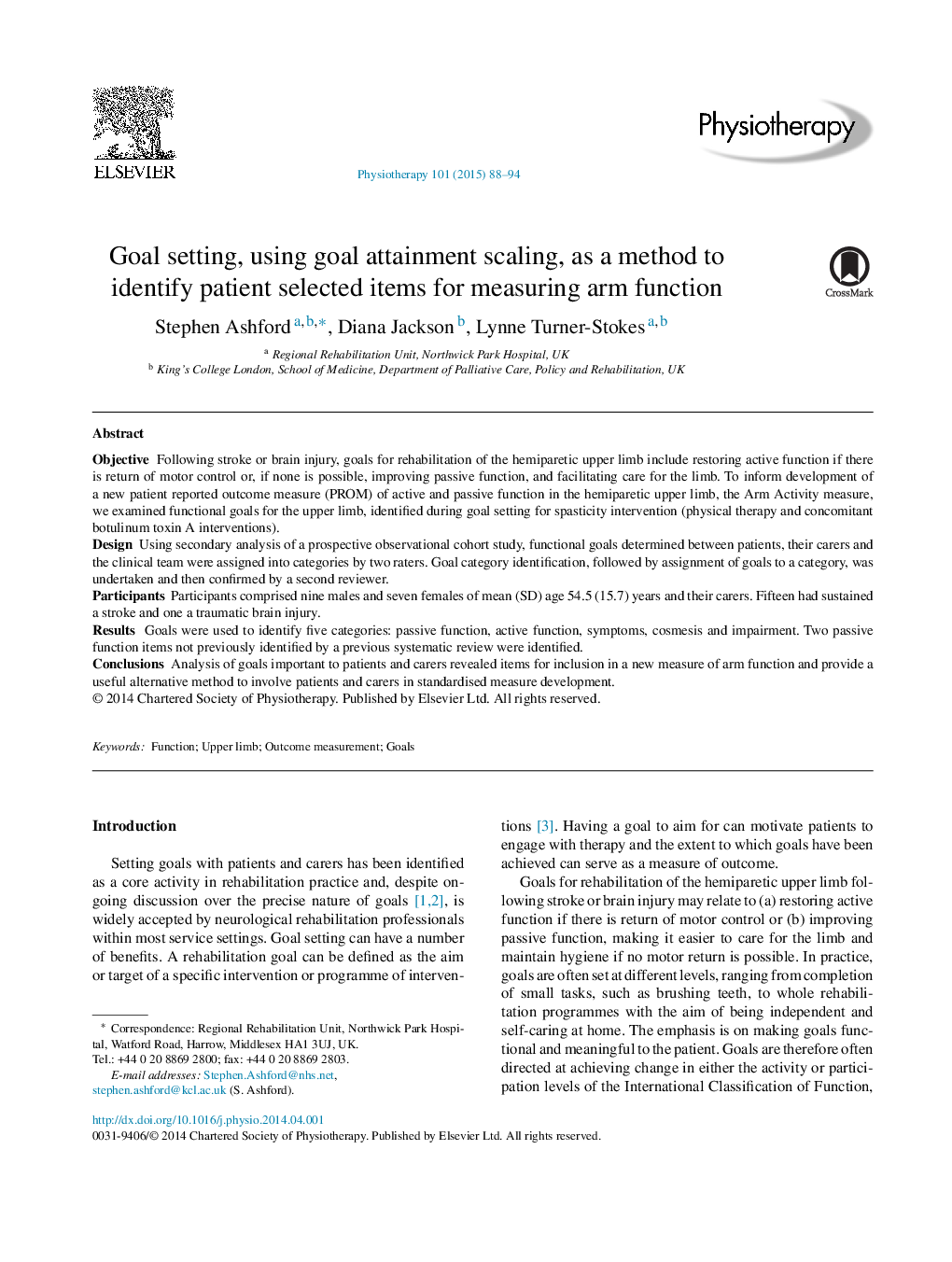| Article ID | Journal | Published Year | Pages | File Type |
|---|---|---|---|---|
| 2627197 | Physiotherapy | 2015 | 7 Pages |
ObjectiveFollowing stroke or brain injury, goals for rehabilitation of the hemiparetic upper limb include restoring active function if there is return of motor control or, if none is possible, improving passive function, and facilitating care for the limb. To inform development of a new patient reported outcome measure (PROM) of active and passive function in the hemiparetic upper limb, the Arm Activity measure, we examined functional goals for the upper limb, identified during goal setting for spasticity intervention (physical therapy and concomitant botulinum toxin A interventions).DesignUsing secondary analysis of a prospective observational cohort study, functional goals determined between patients, their carers and the clinical team were assigned into categories by two raters. Goal category identification, followed by assignment of goals to a category, was undertaken and then confirmed by a second reviewer.ParticipantsParticipants comprised nine males and seven females of mean (SD) age 54.5 (15.7) years and their carers. Fifteen had sustained a stroke and one a traumatic brain injury.ResultsGoals were used to identify five categories: passive function, active function, symptoms, cosmesis and impairment. Two passive function items not previously identified by a previous systematic review were identified.ConclusionsAnalysis of goals important to patients and carers revealed items for inclusion in a new measure of arm function and provide a useful alternative method to involve patients and carers in standardised measure development.
